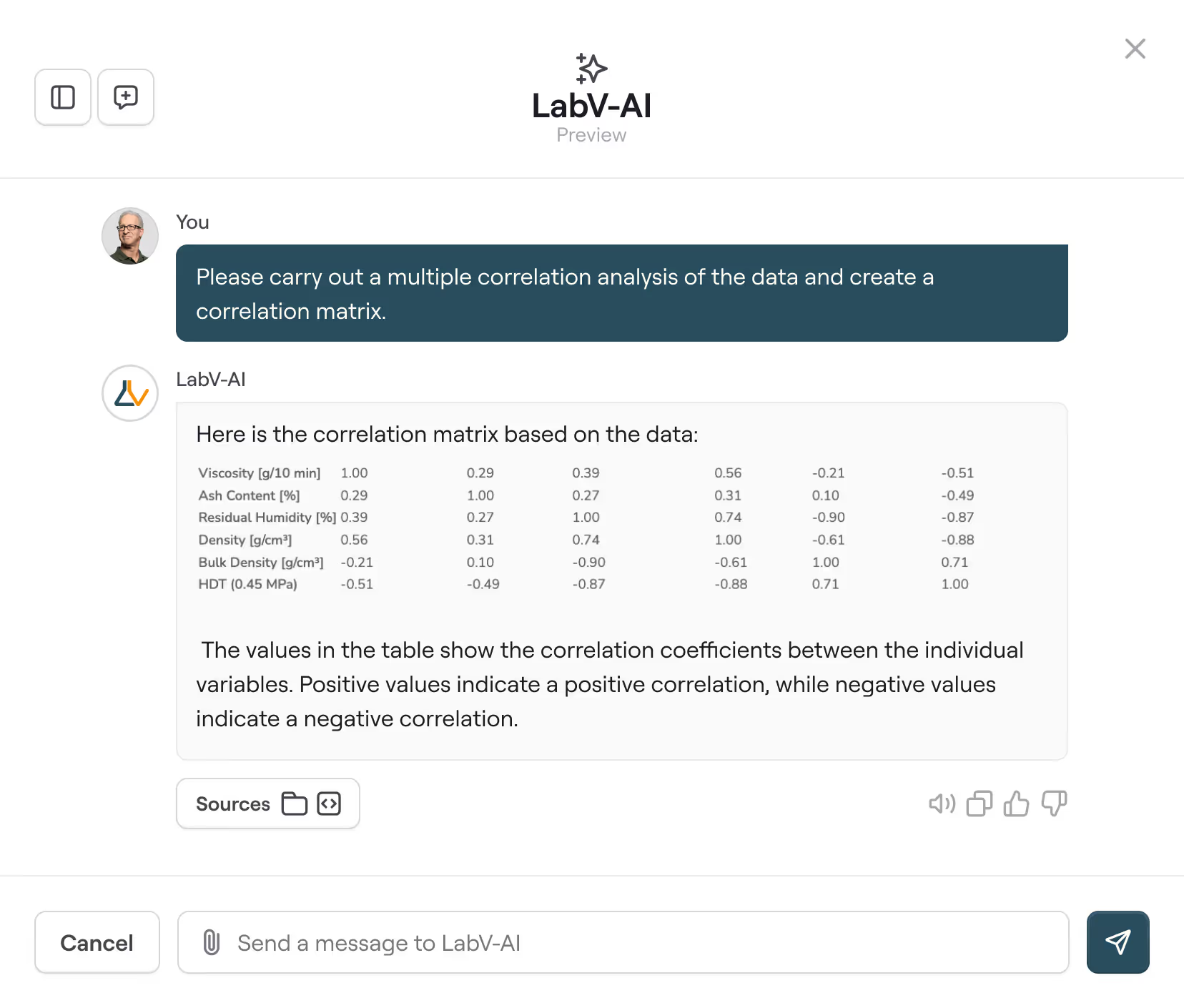Turn your R&D into a competitive edge
LabV is the Material Intelligence platform for R&D. It brings formulations, processes and test data together in one place. Structured, connected and ready to analyze. For faster development, better decisions and more innovative materials.
Data chaos instead of progress
Whether it is formulations, test results or process data, anyone who needs to make decisions in R&D often starts by searching across folders, files and spreadsheets. Instead of structured collaboration and a clear overview, fragmented data, manual routines and duplicated work shape daily operations. Data exists, but not where it is needed.
Knowledge scattered
The results of previous tests are scattered across folders, Excel files or emails. Every search takes time and often leads to repeating what was already known.
Data hard to compare
Different formats, units and naming conventions make evaluation complex. To compare results, you need time, context and often a detour through Excel.
Administration instead of value creation
Tasks that could be automated are still handled manually. From data collection to reporting, this takes time without contributing to development.
Silos instead of integration
Data and processes run in different systems, intermediate formats and isolated environments. Without connection, without context and without a continuous flow of information.
From formulation to results: full visibility into every step of the development process
A structured solution for every R&D team. LabV supports small teams as well as complex development environments. The platform replaces Excel chaos and disconnected tools with a unified workspace where data, experiments and projects come together in a meaningful way. This reduces effort, accelerates development and improves decisions based on reliable data.
Automated data import from test equipment
Import measurement values directly from devices. No manual transfer, no formatting effort.
AI-powered R&D
The AI assistant reads data, understands content, performs calculations and helps with analysis. For faster answers and better decisions.
Central database for all projects
Projects, formulations, results and parameters in one place. Structured, searchable, versioned.
Digital collaboration
Experiments, results and projects are documented directly in the system with comments, notes, tags and user permissions. Everything stays traceable and in the right context.
Automated workflows
Manage experiments, testing and approvals digitally with templates and predefined steps.
Open interfaces
Connect ERP, databases, or your own tools - for seamless integration and consistent data flows via API.
Better data. More efficient development.
Behind every formulation, test or result is knowledge that deserves more than a folder or a file. LabV turns your development work into a system that connects information, captures context and makes progress traceable. Not by replacing the way you work, but by making what you already know usable.

Tangible value from your data
See how structured data, clearer comparisons and less coordination effort help your development move faster. No more starting from scratch. Results become usable sooner.
Fewer repetitions. Relevant data is structured, easy to find and comparable in the right context. No more digging through folders, spreadsheets or people’s memory.
More efficiency through less coordination and manual work. That means more time for what matters: development.
Real results. Real teams. Real stories.
Frequently asked questions
Here's everything you need to know before you get started. Anything still unclear? Write to us
Yes LabV meets the highest security standards: GDPR-compliant, with hosting on German servers, regular backups and encrypted data transmission. Your data belongs to you — anytime.
LabV is easy to integrate into existing system landscapes. The connection is made via an open API and standardized interfaces from industry. In doing so, we focus on the actual data flows in your company.
LabV is individually tailored to your requirements. The goal is to let your team work with a modern, structured system as quickly as possible, without unnecessary complexity. It is usually possible to start within three months.
See LabV in action
Understand how structured data, clear context and connected results change the way R&D works — in real lab environments, not in theory. In 45 minutes, we walk you through typical workflows, real use cases and your specific questions.





